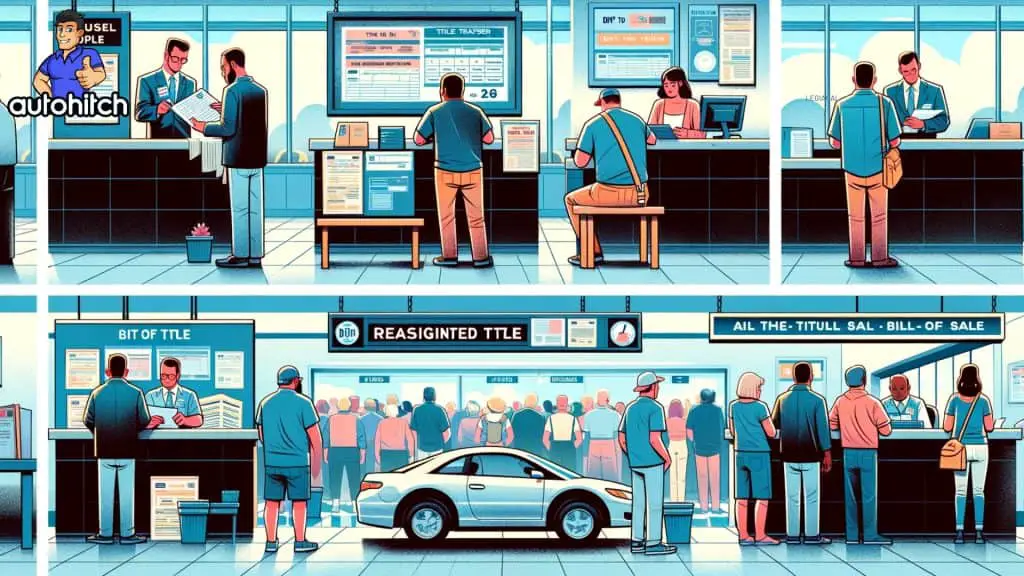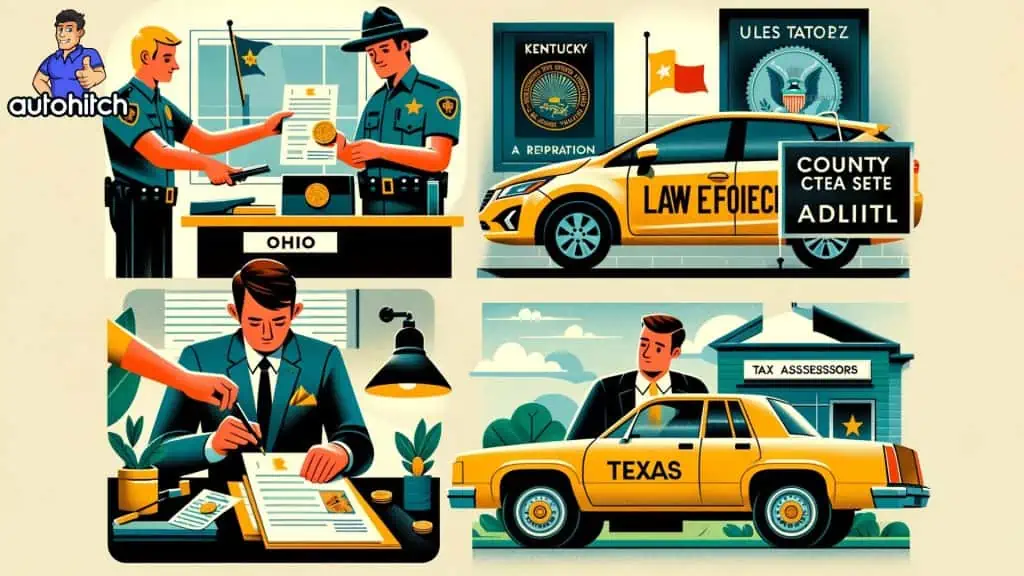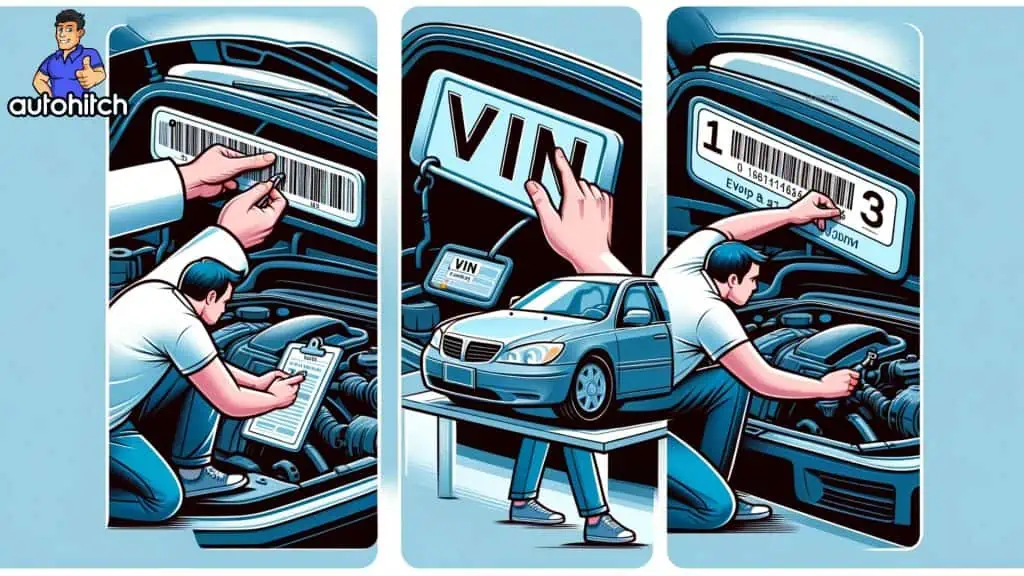While the process varies slightly by the auction house and state, getting a title for a vehicle you purchased at an auction isn’t really that much different than any other vehicle purchase.
The biggest exception is if you purchase a repossessed car because there, you can occasionally encounter lien release issues.
Related Guide: How to get a dealer license for car auctions.
Table of Contents
Steps to Obtain a Title for a Car Bought at Auction
| Step | Description | Documents Needed |
|---|---|---|
| 1. Winning Bid and Payment | Pay the auction house within the specified timeframe after winning the bid. | Payment Receipt |
| 2. Bill of Sale Acquisition | Receive a bill of sale from the auction house as proof of purchase. | Bill of Sale |
| 3. Title Transfer from Auction House | The auction house transfers the title to the buyer. | Vehicle Title |
| 4. Title Transfer and Registration | Transfer the title to your name and register the vehicle at the DMV as with any other vehicle. | Transfer Form, Bill of Sale, Odometer Disclosure, Proof of Insurance |
| 5. Handling Liens | Ensure any existing liens are cleared from the vehicle. | Lien Release Document |
| 6. Dealing with Missing Titles | Apply for a duplicate or replacement title if the original is missing. | Application for Duplicate Title |
Key Steps to Getting a Title for an Auction Vehicle:
- Pay for and take possession of the car from the auction house. Get a bill of sale.
- Have the auction house sign over the existing title to you and submit paperwork.
- Apply for a new title in your name at the DMV with your state’s required forms.
- Handle any lien transfers or missing title issues promptly.
- Verify the Vehicle Identification Number (VIN) matches the paperwork.
Follow these essential steps properly, and you can have a new title issued in your name or dealership within a few weeks (In most cases).
Bidding on and Paying for Your Vehicle at Auction
Purchasing your vehicle at the auction starts with placing the winning bid. Once your bid wins, you must complete payment promptly based on the auction house terms (usually 24-72 hours).
Payment methods generally include:
- Cash
- Credit card
- Certified check
- Money order
- Wire transfer
Upon full payment, the auction will provide you with a bill of sale, which serves as your proof of purchase.
Be sure to verify the vehicle information, like the VIN, is correct. You’ll need to present the bill of sale later when applying for the new title, so keep it in a safe place.
Getting the Title Signed Over From the Auction House

In most cases, the auction house will have the existing title for the vehicle you purchased. After they receive your full payment, they will sign over (or reassign) that title to you.
The title reassignment process involves:
- The seller signing over the title to the auction house (if the car came from a private seller).
- The auction house then signing that title over to you as the buyer.
This process can take anywhere from a few days to a few weeks depending on the auction house’s closing procedures. Be patient but follow up if it seems to be taking longer than expected.
Applying for Your New Title at the DMV

Once you receive the existing title signed over to you, it’s time to apply for your new title in your name through your state’s DMV.
The exact steps vary by state but generally include:
- Completing a title transfer application form.
- Paying title transfer fees.
- Submitting the reassigned title, bill of sale, and any other required documents.
- Possibly getting a vehicle inspection.
For example, in California you would fill out the “Application for Replacement or Transfer of Title” (REG 227) and submit it along with the necessary fees and paperwork to the DMV for processing.
After the DMV verifies you own the vehicle, they will issue a new title certificate in your name. This can take 2-6 weeks in most states.
Handling Liens or Missing Titles
If there is an outstanding lien on the vehicle, you cannot apply for a new title until it is cleared by the lienholder. Contact them promptly to resolve it.
If the auction house does not have the title or it is lost, you may need to apply for a duplicate title separately through your DMV before transferring it to your name. Provide the bill of sale and VIN verification to support your ownership claim.
State-Specific Variances to Be Aware Of

While the general process is similar nationwide, some states have unique requirements when titling an auction vehicle:
- In Ohio, you need to submit a VIN inspection from law enforcement.
- Kentucky requires a notarized VIN affidavit if the title is missing.
- In Texas, you pay sales tax directly to the county tax assessor when applying for the new title.
Consult your local DMV for specific guidelines in your state. Some states also have more complex steps for titling salvage or rebuilt vehicles.
Verifying the VIN When Applying for Title

As a final precaution, always verify that the Vehicle Identification Number (VIN) on both the paperwork and physical vehicle match. This helps protect against VIN fraud or mix-ups.
You can find the VIN in multiple places on the vehicle itself:
- Driver’s side dashboard
- Inside the driver’s door jamb
- Front of the engine block
Checking the VINs match helps ensure you receive the proper title paperwork for the vehicle you actually purchased.
Key Takeaways for Getting a Title from an Auction House:
- Pay for the vehicle promptly and get a bill of sale from the auction house.
- Wait for the auction house to sign over the existing title to you.
- Apply for a new title in your name through your local DMV.
- Resolve any lien issues before transferring the title.
- Verify the VIN number matches the paperwork to prevent fraud.
My Closing Thoughts
With persistence and careful attention to each step, you can securely obtain a title in your name for a quality used vehicle bought at auction. Having the right title paperwork is essential for legally driving as well as maintaining and reselling your auction purchase down the road.



